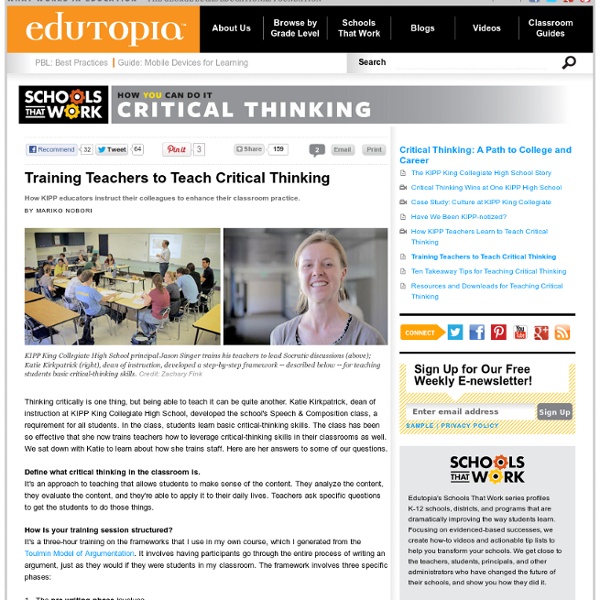Training Teachers to Teach Critical Thinking

Scientists have said...: A chartered assessor in every school?
At the ASE summer celebration conference I somehow managed to agree to present, on behalf of a working group, an education policy idea to a panel of the great and the good, chaired by Warwick Mansell. This is the idea my group came up with: We would like the assessment system to support students in their learning, rather than be the driver of their learning. Currently, exams are reasonably useful for capturing some of the factual knowledge that students have learned, as well as a limited skills set that they can use with their knowledge. However, exams are not good ways to capture the procedural knowledge and skills that are also important for the mastery of a subject. For some knowledge and skills, teacher assessment is a much better way of capturing what a student knows and can do. However, the challenge is that in the high stakes testing culture that we have today, there is always an incentive for teacher assessment to be rather more generous than might be appropriate.
GCSE overhaul in England made final by Ofqual
1 November 2013Last updated at 10:23 ET By Angela Harrison Education correspondent, BBC News Many changes are planned and under way for England's exam system Exams regulator Ofqual has confirmed the changes it is making to GCSEs, in what it calls the biggest shake-up of exams in England for a generation. A new grading system will use numbers instead of letters, and coursework is being scrapped for most subjects. The changes will be in stages, starting with pupils due to take GCSE exams in 2017. English and maths will be the first subjects affected. Pupils will begin studying the new courses in English language, English literature and maths from the autumn of 2015. And about 20 other popular GCSE subjects will be revamped in the same way, ready for teaching a year later, in 2016, with the first exams for those taken in 2018. 'Fresh content' The changes apply to England only. Continue reading the main story Around the UK The GCSE changes being announced will apply only to pupils in England.
Yearbook 2014 - Cidree - Consortium of Institutions for Development and Research in Education in Europe.
Edited by Frode Nyhamn and Therese N. Hopfenbeck In this book, we presents articles from actual implementation initiatives in ten different European countries. There is a considerable interest in the issue of implementation these days. The articles in the CIDREE-yearbook of 2014 present some general learning points based on the experiences of the CIDREE members on the issue of implementing education policy. YB 14 From Political Decisions to Change in the Classroom.pdf (pdf, 7.71 MB)
Related:
Related:



